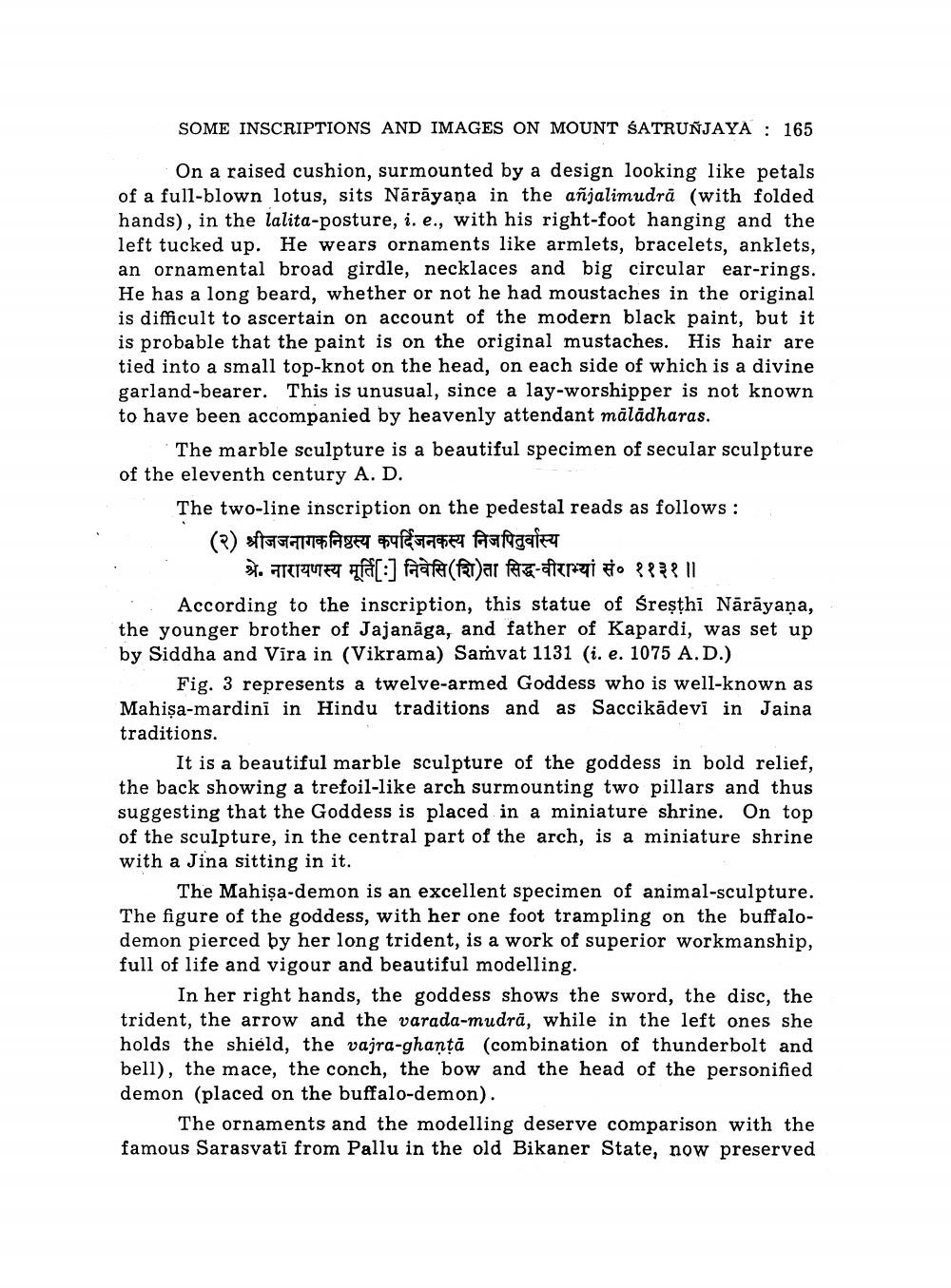Book Title: Some Inscriptions And Images In Mount Satrunjaya Author(s): Ambalal P Shah Publisher: Ambalal P Shah View full book textPage 5
________________ SOME INSCRIPTIONS AND IMAGES ON MOUNT SATRUNJAYA : 165 On a raised cushion, surmounted by a design looking like petals of a full-blown lotus, sits Nārāyaṇa in the añjalimudrā (with folded hands), in the lalita-posture, i. e., with his right-foot hanging and the left tucked up. He wears ornaments like armlets, bracelets, anklets, an ornamental broad girdle, necklaces and big circular ear-rings. He has a long beard, whether or not he had moustaches in the original is difficult to ascertain on account of the modern black paint, but it is probable that the paint is on the original mustaches. His hair are tied into a small top-knot on the head, on each side of which is a divine garland-bearer. This is unusual, since a lay-worshipper is not known to have been accompanied by heavenly attendant maladharas. The marble sculpture is a beautiful specimen of secular sculpture of the eleventh century A. D. The two-line inscription on the pedestal reads as follows: (२) श्रीजजनागकनिष्ठस्य कपर्दिजनकस्य निजपितुर्वास्य श्रे. नारायणस्य मूर्ति[:] निवेसि(शि)ता सिद्ध-वीराभ्यां सं० ११३१॥ According to the inscription, this statue of śreşthi Nārāyaṇa, the younger brother of Jajanāga, and father of Kapardi, was set up by Siddha and Vira in (Vikrama) Samvat 1131 (i. e. 1075 A.D.) Fig. 3 represents a twelve-armed Goddess who is well-known as Mahişa-mardini in Hindu traditions and as Saccikādevi in Jaina traditions. It is a beautiful marble sculpture of the goddess in bold relief, the back showing a trefoil-like arch surmounting two pillars and thus suggesting that the Goddess is placed in a miniature shrine. On top of the sculpture, in the central part of the arch, is a miniature shrine with a Jina sitting in it. The Mahişa-demon is an excellent specimen of animal-sculpture. The figure of the goddess, with her one foot trampling on the buffalodemon pierced by her long trident, is a work of superior workmanship, full of life and vigour and beautiful modelling. In her right hands, the goddess shows the sword, the disc, the trident, the arrow and the varada-mudrā, while in the left ones she holds the shield, the vajra-ghanţă (combination of thunderbolt and bell), the mace, the conch, the bow and the head of the personified demon (placed on the buffalo-demon). The ornaments and the modelling deserve comparison with the famous Sarasvati from Pallu in the old Bikaner State, now preservedPage Navigation
1 ... 3 4 5 6 7 8 9 10 11 12
